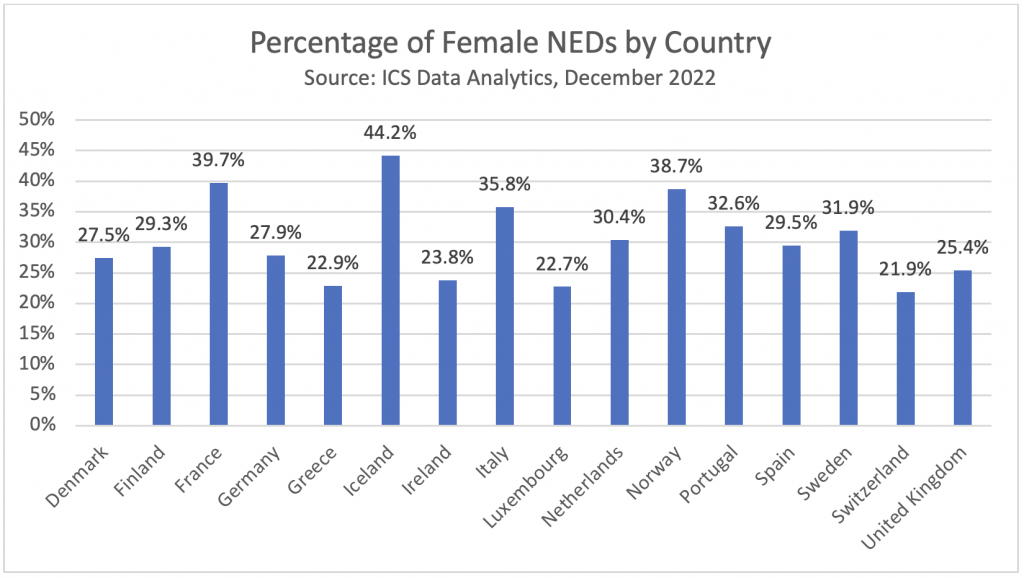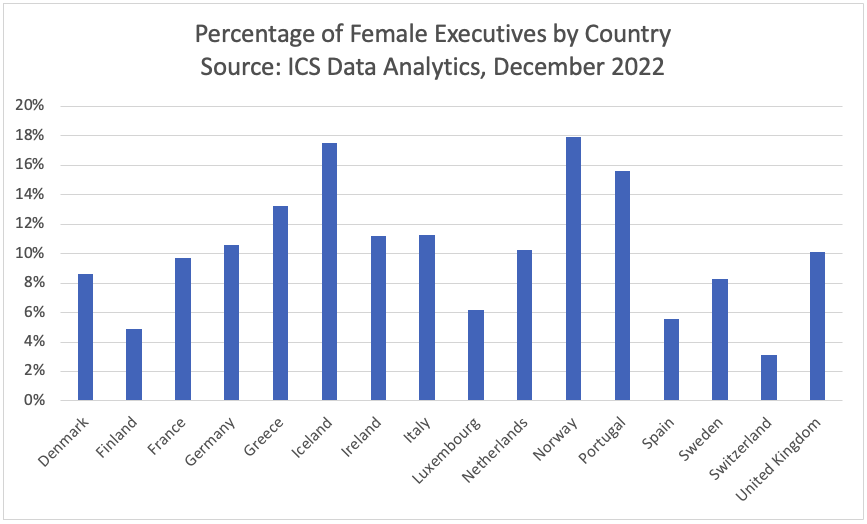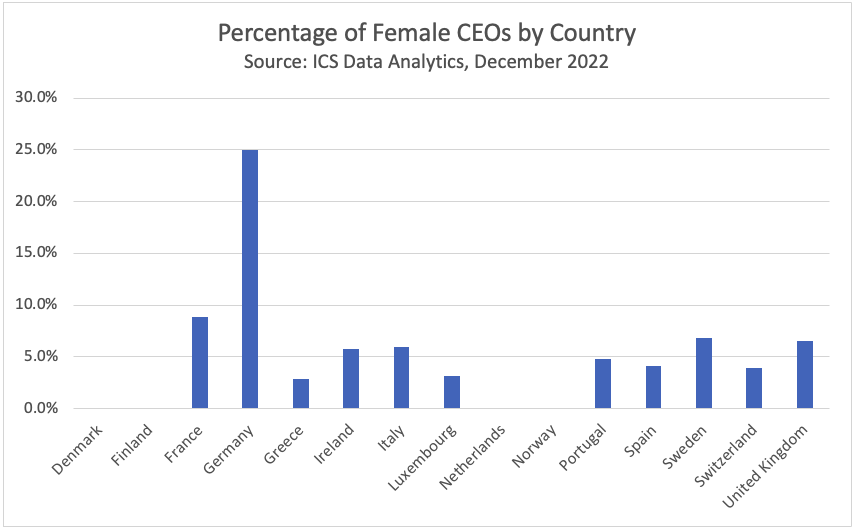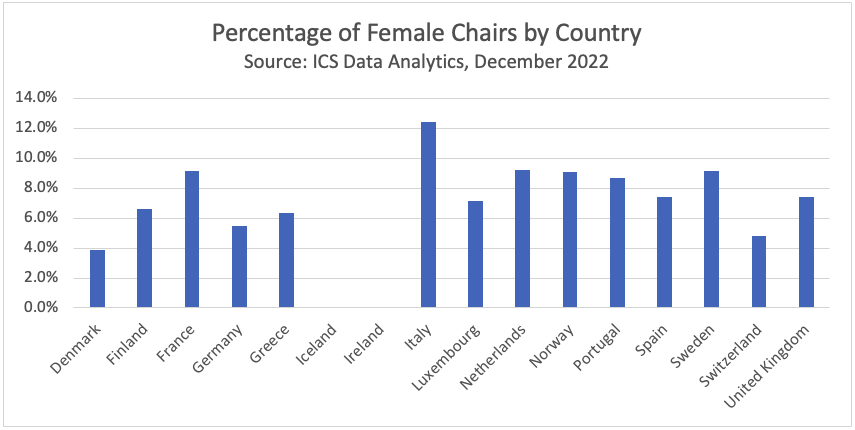By July 2026, all large, publicly-listed companies in the European Union will have to meet new quotas for the percentage of women holding directorship roles. While some countries are already close to reaching those levels, on average, others have a long way to go in just a few years.
A European Council directive approved by the European Parliament late last year mandates that at least 40% of non-executive director (NED) positions in listed companies should be held by women. If countries choose to apply the new rules to both executive and non-executive directors, the target would be 33% of all director positions.
As of last June, 31.5% of board members in EU countries were women, though only 8% of them served as the chair, European Council statistics showed. The directive, first proposed 10 years ago, aims to improve these statistics overall, especially in countries that have struggled to make progress. ISS Corporate Solutions examined the progress towards these thresholds across Europe. We also looked at the number of women CEOs and chairs, though the directive doesn’t address those roles.
Key Findings:
- Only Iceland exceeds the 40% threshold, while France and Norway come within a couple of percentage points
- Norway has the highest percentage of women executive directors, at 17.9%, while Portugal had the lowest at just over 3%
- In 14 of the 16 countries examined, women CEOs accounted for less than 10% of the total
- Denmark, Finland, The Netherlands and Norway had no female CEOs
- Germany had by far the highest percentage of female CEOs at 25%
- Italy has the highest number of female chairs, though that is only 12% of the total
NEDs on boards
Research from ISS Corporate Solutions Data Analytics shows that few countries are already meeting the threshold. As can be seen from the list below, many countries are not even meeting their self-imposed gender quotas for directors. Country-based quotas already in place include the following:
- Belgium – 33%
- France – 40%
- Italy – 33%
- Germany – 30%
- Austria – 40%
- Portugal – 20%
- Greece – 33%
- The Netherlands – 33%
- Spain – 40%
- Iceland – 40%
There are different compliance dates for each of these quotas, but, as can be seen, the new directive supersedes several of them.

According to ICS data, companies in Greece, Ireland, Luxembourg and Switzerland are all faring relatively poorly in recruiting female directors.
Companies that fail to meet the threshold will need to “adjust their selection process,” the directive states. They will be required to put in place “fair and transparent selection and appointment procedures, based on a comparative assessment of the different candidates on the basis of clear and neutrally formulated criteria.” The directive says that when male and female candidates are equally qualified, companies that are not in compliance will have to appoint the female candidate.
Countries that already have a 40% quota do not have to adopt the directive. In addition, companies must provide information annually about gender representation on their boards and the measures they are taking to achieve the mandated threshold. Countries must also publish an annual list of the companies that have achieved the directive’s objectives.
Percentage of executive director roles varies widely
Statistics from ISS Corporate Solutions Data Analytics below are just for executive directors. As we saw above, only Iceland has already exceeded the quota for women NEDs. It is likely that Iceland would also exceed the all-director quota of 33% too, since 17.5% of its executive directors are women. Only Norway has a higher percentage of women executive directors, at 17.9%; a figure that might be enough to allow it to meet the 33% threshold, as more than 39% of its NEDs were female.
In six of the 16 countries examined, women executives accounted for less than 10% of the total, with three more – the U.K., The Netherlands and Germany – barely clearing that hurdle. Portugal had the lowest percentage of female executives at just over 3%.

Women CEOs and Chairs
While progress can be seen in electing, recruiting and/or promoting women NEDs and executive directors, the same cannot be said for the highest positions in corporations: CEOs and chairs. In 14 of the 16 countries examined, women CEOs accounted for less than 10% of the total, while Denmark, Finland, The Netherlands and Norway had none at all. Germany is far ahead of the rest of the pack with 25% of CEOs being women.

The figures below are for women chairs, either executive or non-executive.

Despite a good showing in the employment of female executive and non-executive directors, Iceland is one of the two countries without any female chairs, the other being Ireland. Italy has the highest number of female chairs, though that is only 12% of the total. In all the other 13 countries in the study, women chairs account for less than 10% of the total.
By: Paul Hodgson, Senior Editor, ISS Corporate Solutions




